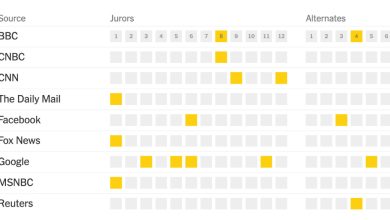Are Large Corporate Profit Margins Causing Inflation?

Markups and profits of businesses in the United States last year were the highest since at least the 1950s, according to an analysis published on Tuesday by the Roosevelt Institute, a progressive think tank. This has raised questions about a possible relationship between corporate greed and inflation.
But it’s not a simple story of businesses driving up prices to earn more money, Mike Konczal, one of the paper’s authors, who is the institute’s director of macroeconomic analysis, told me. “Is greed the sole or main reason for inflation?” he asked. “I’d say no. It’s part of the mix of explanations that should be under consideration.”
The Roosevelt Institute paper sheds light on one of the biggest economic questions of 2021: What is the chief cause of today’s high inflation — strong demand, supply shortages or rising profit margins? Those who cite strong demand blame the Biden administration, Congress and the Federal Reserve for overstimulating the economy. Those who cite supply shortages point fingers at disruptions caused by anomalies such as the Covid-19 pandemic and Russia’s invasion of Ukraine. Foes of corporate bigness focus on the excess-profits theory.
There’s some evidence for all three explanations, according to the paper, “Prices, Profits and Power: An Analysis of 2021 Firm-Level Markups,” by Konczal and Niko Lusiani, the director of the Roosevelt Institute’s corporate power team.
The chart above shows the net profit margin, which is the net after-tax profit of companies divided by their sales. Konczal and Lusiani used data from the Compustat unit of S&P Global that goes back to 1955. They also looked at companies’ markup, the difference between the prices they charge and their marginal costs, which they define as the cost of goods sold and labor but not sales, general and administrative expenses.
Supporting the strong-demand theory of inflation is the fact that increases in markups were widespread among many types and sizes of companies, suggesting that economywide strength in the demand for goods and services was an important factor in price increases, the authors found.
At the same time, markups increased more sharply in industries that experienced disruptions, indicating that supply chain problems were also a factor in inflation. Among the sectors with big markups were real estate, mining, quarrying and oil and gas extraction. (The biggest markup increase that the authors found was in finance and insurance, which is a bit strange, since that sector wasn’t obviously bottlenecked.)
The third explanation, rising profit margins, isn’t an alternative but rather a supplement to the demand and supply explanations. It says that companies seized the opportunity of strong demand and weak supply to increase their profits. Supporting that theory is the authors’ finding that, after adjustments for size, companies that increased prices before 2021 were the most likely to increase prices in 2021. That indicates that they had a position in the market that made it easier for them to impose price increases and make them stick.
Konczal and Lusiani used a methodology that was developed for an influential article, “The Rise of Market Power and the Macroeconomic Implications,” by Jan De Loecker, Jan Eeckhout and Gabriel Unger, which was published in The Quarterly Journal of Economics in 2020. “The big difference is that they find a gradual increase from 1980 to 2015,” Konczal said, comparing the earlier research with his and Lusiani’s findings. “This is a very abrupt and sudden change in 2021.”
I asked Konczal what he thought the Roosevelt paper implies for public policy. He said it shows that “there is room for these profit margins to come down” through competition, antitrust enforcement or presidential jawboning (which he called “the bully pulpit”). He said there are already signs in national accounts data — not included in the Roosevelt paper — that profit margins retreated a bit in the first quarter of this year from their recent peaks and may shrink more. The paper also supports the case for legislative and administrative actions to open bottlenecks in supply chains and for the Federal Reserve to be “more patient and less erratic” in raising interest rates, he said.
Elsewhere
Low-income women with children face a steep, lifetime “marriage tax” that discourages them from marrying, according to new research by the economists Elias Ilin of the Federal Reserve Bank of Atlanta, Laurence Kotlikoff of Boston University and Melinda Pitts of the Atlanta Fed. The three researchers looked beyond federal income taxes and analyzed the effects of all major federal and state programs, such as Medicare, Medicaid and Section 8 housing vouchers. Benefits are based on the income of the family, so forming a family through marriage tends to reduce per-person benefits. The economists estimate that if there were no financial penalty for getting married, women with children in the bottom fifth of incomes would have a 14 percent higher marrying rate.
“Given the importance to children of living with both parents and the economic benefits to both children and adults of forming and maintaining a nuclear family, researching ways to make the fiscal system marriage neutral seems highly worthwhile,” the paper concludes.
Quote of the day
“So we cannot in the third world simply borrow or buy science from those ahead of us. Pure science we can take as it comes, but much of applied science we have to make for ourselves.”
— Arthur Lewis, Nobel Banquet address, 1979
Have feedback? Send me a note at [email protected].




